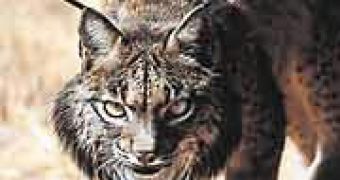About 6 waves of massive extinction are known in the history of the Earth. The last one wiped out the dinosaur world 65 million years ago and was probably due to a meteorite collision.
But the recent one has no natural causes. It is man made and rampant, eliminating three animal or plant species every hour.
Scientists and environmentalists issued reports about threats to creatures and plants including right whales, Iberian lynxes, wild potatoes and even wild peanuts.
Experts gathered on May 22, at the International Day for Biological Diversity, a report on the threatened species from whales and Iberian lynxes to wild potatoes and wild peanuts. "Biodiversity is being lost at an unprecedented rate," said U.N. Secretary General Ban Ki-moon.
The threats to the wildlife diversity vary from habitat loss due to land clearance for farms or cities, poaching, pollution and rising human populations to global warming. "The global response to these challenges needs to move much more rapidly, and with more determination at all levels - global, national and local," he said.
It is obvious that the goal set by world leaders at an Earth Summit in 2002, namely a "significant reduction" by 2010 in the rate of species losses, will not be achieved. "We are indeed experiencing the greatest wave of extinctions since the disappearance of the dinosaurs," said Ahmed Djoghlaf, head of the U.N. Convention on Biological Diversity. "Extinction rates are rising by a factor of up to 1,000 above natural rates. Every hour, three species disappear. Every day, up to 150 species are lost. Every year, between 18,000 and 55,000 species become extinct. The cause: human activities.", he said.
Bu the "Red List" of endangered species lists just 784 species exterminated since 1500, from the dodo bird of Mauritius to the golden toad of Costa Rica; but this because mainly the vertebrate species have been monitored. "The hugely varying figures might both be right, in their way. The U.N. figures are based on loss of habitats, estimates of how many species lived there and so will have been lost. Ours are more empirical - those species we knew were there but cannot find." told Reuters Craig Hilton-Taylor, manager of the list presented by the World Conservation Union grouping 83 governments, researchers and environmental organizations.
Global warming, triggered by the carbon dioxide generated through human burning of the fossil fuels, will wipe out habitats by drying out rainforest or by melting polar ice. "The results of the report highlight the challenge we currently face to halt the loss of biodiversity by 2010," said European Commissioner Stavros Dimas.
UE's goal is to stop biodiversity loss by 2010, not just to slow down the process. One in six land mammals in Europe are threatened, from the Iberian lynx (the rarest cat in the world) to the Arctic fox.
The loss of wild varieties of crop plants like potatoes and peanuts due to global warming translates into the loss of genes that could help cultivated varieties stand pests or disease.

 14 DAY TRIAL //
14 DAY TRIAL //